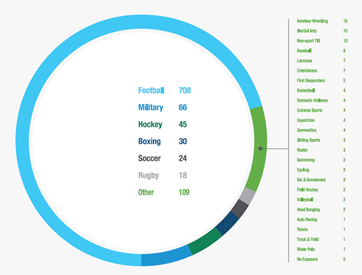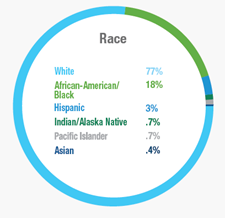Press Releases
New report from VA-Boston University-Concussion Legacy Foundation Brain Bank marks 1,000 brain donations milestone with inside look at CTE research
Report reveals never-before-seen donor demographics, new testimonials from donor family members including Dwayne Johnson, provides roadmap for future
(BOSTON) – Research collaborators from the VA, Boston University (BU), and the Concussion Legacy Foundation (CLF) published an inspiring new report today, “1,000 Reasons for Hope,” which exclusively details the first 1,000 brain donors studied at the VA-BU-CLF Brain Bank since 2008 and how they have advanced research on concussions and CTE. The report also explains how the next 1,000 brain donors will answer critical questions that take us closer to preventing, diagnosing, and treating CTE, as well as the long-term consequences of concussion and traumatic brain injury.
“Our understanding of CTE is far behind that of other neurodegenerative disease like Alzheimer’s Disease and ALS,” said Dr. Ann McKee, chief of neuropathology for the VA Boston Healthcare System and director of the VA-BU-CLF Brain Bank. “Each case we have the honor to study accelerates the science of CTE. Thanks to our Legacy Donors, incredible team and growing national and international collaborations, we are now on the cusp of major breakthroughs.”

“Thanks to our Legacy Donors and their families, as well as our incredible research team, we now have a roadmap for how to diagnose and treat CTE during life,” said Chris Nowinski, PhD, CLF co-founder and CEO. “Our discoveries have already inspired changes to sports that will prevent many future cases of CTE in the next generation of athletes.”
Newly released data found only in “1,000 Reasons for Hope” shows the VA-BU-CLF Brain Bank has received tissue from donors who died as young as age 14 and as old as age 98, with more than 30 primary exposures to brain trauma.
Football players are by far the most represented group, with 708 donors having football as their primary exposure to head impacts, including 305 former NFL players. Military veterans are the next largest group (66) followed by ice hockey (45), boxing (30), soccer (24), and rugby (18).

The report also reveals the race and sex of the first thousand Legacy Donors, with 77% white, 18% Black, and 5% other races. To ensure our discoveries benefit all, CLF is actively recruiting athletes and veterans from diverse racial backgrounds and exposures to head impacts. Recruiting females is a priority, as only 2.8% of the first thousand brains are female. Everyone is invited to pledge to donate their brain or join CLF’s clinical research registry at PledgeMyBrain.org.

The research highlighted in the report would not be possible without the generous contributions made by the families who donated the brain of their loved one. In “1,000 Reasons for Hope,” some of those family members talked publicly about the donation process for the first time.
“I’m very grateful for the insight the Concussion Legacy Foundation has been able to provide me and my family,” said Dwayne Johnson, the son of former professional wrestler Rocky Johnson. “Losing my dad without warning was a tough kick in the gut, but one of the saving graces of his passing was coming to understand just how healthy his brain was. As a professional wrestler his entire life his brain endured a lot and I know he’d be proud knowing the donation of it has impacted brain research and hopefully can shed some light and understanding, not only in science, but also to other families around the world.”
“It provided my family and I with final closure,” said Gail Evans, widow of former NFL player James Evans. “It gave us light into a world that had darkened around us and provided us with understanding and peace.”
With the next 1,000 Legacy Donors studied, VA-BU-CLF Brain Bank researchers and collaborators expect to make monumental progress in the fight against CTE and traumatic brain injuries. The report features insights from 17 of the world’s top CTE researchers about what they expect to learn from the next thousand donors.
You can read and download the full “1,000 Reasons for Hope” report here.